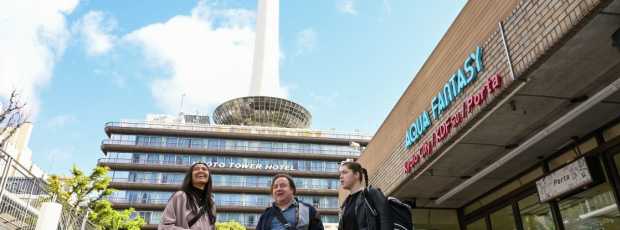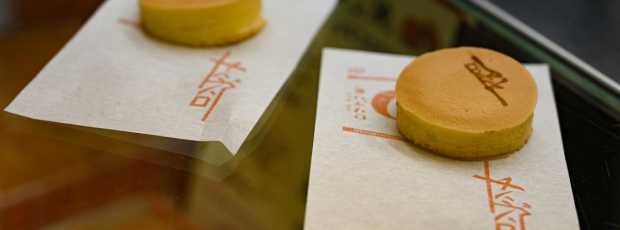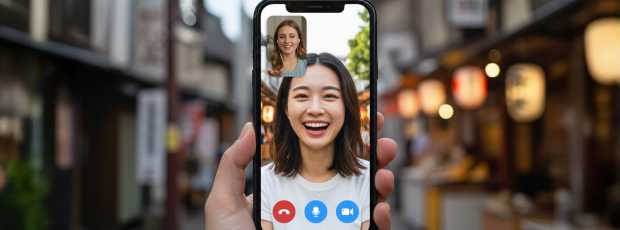Alex was an amazing guide! Showed us around all the sites, including those off the normal touristy routes. The tour was excellent!Heather, Kyoto, 2025
Table Of Contents
- Kyoto's Most Iconic Sights You Cannot Skip
- Skip the Crowds: What's Overrated and Better Alternatives
- Hidden Gems That Locals Love
- Experience Kyoto Through the Seasons
- Cultural Kyoto: Temples, Shrines, and Living Traditions
- Spiritual Kyoto: Zen, Shinto, and Seasonal Rituals
- Kyoto Through Different Interests
- Photography and Outdoor Experiences
- Where to Stay in Kyoto and Why Location Matters
- Day Trips from Kyoto That Transform Your Understanding
- Planning Your Kyoto Experience: Practical Wisdom
- FAQ About Visiting Kyoto
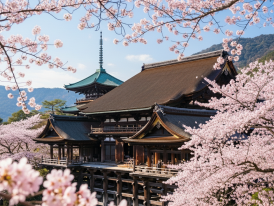
Spring cherry blossoms surround Kyoto’s Kiyomizu-dera temple with its historic wooden stage
Growing up in Kyoto, my year wasn’t marked just by months but by the first cherry blossoms along the Kiyomizu-dera temple paths. I’ve walked those same stone streets since I was a kid, seen the temples change with the seasons, and learned that the best things to do in Kyoto often happen when you take your time instead of rushing through the crowds.
In the mornings, you might hear temple bells echo over tile rooftops, just like I used to on my way to school. If you pass a small shrine early, the scent of incense will probably greet you, and you might catch monks heading out to start their day.
Kyoto’s rhythm is full of contrasts. At Fushimi Inari Shrine, you’re surrounded by people, but ten minutes later, you could be in a moss garden where monks have been meditating for 800 years.
With over 2,000 temples and shrines, it can feel impossible to choose what to see, whether that’s watching the gold leaf shimmer at Kinkaku-ji Temple or slowing down for a traditional tea ceremony and a cup of powdered green tea. Either way, knowing the city’s pace will make your time here even better.
Kyoto's Most Iconic Sights You Cannot Skip

Sunlight filters through rows of vermilion torii gates on Mount Inari
Fushimi Inari Shrine: Where Thousands of Red Gates Lead to Magic
Fushimi Inari Shrine deserves its reputation as one of the most famous temples in Kyoto. Those vermilion torii gates transform a mountain hike into a spiritual journey through ancient temples. The shrine honors Inari, a Shinto god of rice and prosperity, with gates donated by businesses hoping for good fortune.
Start your climb early, ideally before 8 AM, when morning mist clings to the mountainside. Each gate bears the name of its donor, creating a physical prayer stretching up Mount Inari. The higher you climb, the fewer people you'll encounter.

The Golden Pavilion in Kyoto mirrored in a serene pond framed by seasonal gardens
Kinkaku-ji Temple: The Golden Pavilion That Defines Kyoto Beauty
Kinkaku-ji Temple, officially known as Rokuon-ji, might be the most photographed building in all of Kyoto. This golden pavilion sits like a jewel beside its reflection pond, each season painting a different backdrop behind its gleaming walls. The top two floors are completely covered in gold leaf, creating a structure that seems to glow from within.
The temple was originally built as a retirement villa for a shogun in 1397, and later converted to a Zen temple. What you see today is actually a 1955 reconstruction. The original building was burned down by a monk who had become obsessed with its beauty.
The best viewing spot is immediately after entering the temple grounds, where the building reflects perfectly in the mirror-like pond. Morning light makes the gold leaf shimmer like captured sunlight, while afternoon sun brings out deeper, richer tones. When winter snow settles on the pavilion's roof, it becomes one of Kyoto's most transcendent scenes.

Quiet grounds with lush plantings beside a minimalist rock garden arranged in classic Japanese style
Ginkaku Ji Temple: Silver Pavilion's Understated Elegance
While Kinkaku-ji dazzles with gold, Ginkaku-ji Temple (the Silver Pavilion) represents refined restraint.
This temple showcases beautiful gardens and a rock garden demonstrating Japanese landscape design. Located in the north, within walking distance of the Philosopher’s Path, it pairs well with other famous places and things to do in Kyoto, Japan, as part of a comprehensive temple tour.
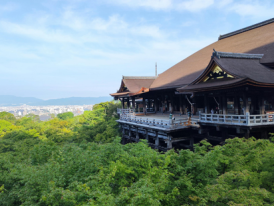
Visitors take in expansive city views from a historic hillside structure surrounded by seasonal foliage
Kiyomizu-dera Temple: Panoramic Views and Ancient Wooden Wonder
Kiyomizu-dera Temple perches on a hillside like a wooden ship floating above Kyoto’s rooftops. This UNESCO World Heritage Site was built without a single nail, relying instead on wooden joints that have held the structure together for over 1,200 years. The main hall’s wooden stage extends 13 meters over the slope, offering sweeping views of the city below.
The temple’s name means “clear water,” referring to the waterfall beneath the main hall. Visitors can drink from three streams, each said to grant a different wish: longevity, success in studies, or luck in love. Choose only one stream, locals say, or you’ll appear greedy to the gods.
Cherry blossom season transforms the temple grounds into a pink and white dreamscape, while autumn maples create a sea of red and gold, and night illuminations take place during peak seasons, casting the temple in an ethereal glow.
Want to Experience It Firsthand?
Step into the neighborhood, scene, or story with someone who knows it inside out.
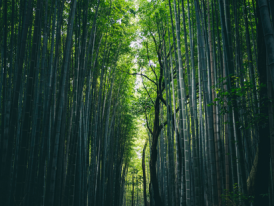
Visitors stroll along a sunlit path framed by dense bamboo in Kyoto’s famous Arashiyama district
Arashiyama Bamboo Grove: Walking Through Green Light
The Arashiyama bamboo grove creates a cathedral of living pillars, filtering sunlight into shifting patterns of green and gold. Towering bamboo stalks reach heights of 50 feet, their leaves whispering secrets in every breeze. The sound has even been named one of the "100 Soundscapes of Japan" by the Ministry of Environment.
The main path through the grove stretches about 500 meters, linking Tenryu-ji Temple with smaller shrines. Visiting early in the morning rewards you with magical green light and fewer crowds.
For the quietest experience, weekdays outside public holidays, especially just after sunrise before tour buses arrive, are best. The bamboo grove is located within walking distance of Saga Arashiyama Station, making it easily accessible from central Kyoto.

A quiet canal walkway shaded by pink cherry blossoms with petals floating on the water
Philosopher's Path: Cherry Blossoms and Contemplative Walks
The Philosopher’s Path winds for two kilometers beside a gentle canal, connecting Ginkaku-ji Temple to Nanzen-ji Temple. It earned its name from philosopher Nishida Kitaro, who walked this route daily for meditation in the early 20th century.
In spring, hundreds of sakura trees form a pink canopy over the water, with petals drifting down like snow. Small shrines and temples, including Honen-in Temple with its striking gate, dot the path. Without stops, the walk takes about 30 minutes, but I recommend allowing two hours to fully soak in the atmosphere.
Not Just a Place on a List
Experience it through hidden corners and stories most visitors miss.
Skip the Crowds: What's Overrated and Better Alternatives
Gion at Peak Hours: Try Miyagawacho and Pontocho Instead
Everyone wants to see geisha in Kyoto’s famous geisha district, but Gion becomes a zoo during peak hours. Explore Kyoto’s historic districts, where wooden houses and narrow streets hold centuries of stories.
Tourists with cameras mob every woman in traditional dress, often missing that most are visitors wearing rented kimonos, not actual geisha or apprentice geisha. Understanding geisha culture requires patience and respect, as these are working artists who maintain centuries-old traditions of dance, music, and hospitality.
The authentic geisha culture of Kyoto involves years of training in traditional arts, and seeing this world properly means learning its customs and respecting its boundaries.
Miyagawacho offers a quieter, more traditional geisha district experience. This narrow district runs parallel to the Kamogawa River and features wooden houses and teahouses where real geiko still entertain guests, away from the larger tourist crowds.
Pontocho is another alternative that comes alive at dusk, with riverside restaurants lining picturesque streets, where lanterns cast a soft glow on wooden facades during summer evenings.

A peaceful Miyagawacho street lit by lanterns with wooden buildings on either side
Arashiyama Mid-Morning Crowds: Head North to Sanzenin Temple
Arashiyama’s bamboo grove is usually packed by 10 AM. Instead, head to northern Kyoto. Sanzen-in Temple, about an hour from central Kyoto by bus, offers equally impressive nature with far fewer visitors. This temple complex in Ohara village features Japan’s most beautiful moss gardens and ancient trees that dwarf the buildings.
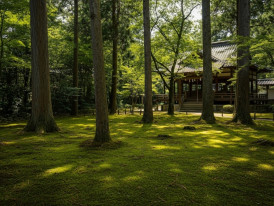
Lush moss and tall trees surround historic buildings at Sanzenin Temple
Nishiki Market's Central Stalls: Find Morning Markets in Local Neighborhoods
Once a beloved narrow shopping street for locals, Nishiki Market’s central stalls have become tourist traps. For authentic market experiences, explore morning markets in local neighborhoods. In areas like Demachiyanagi or Kamigyo Ward, early markets cater to locals and restaurant chefs, offering seasonal produce and traditional ingredients in a more relaxed, everyday atmosphere.
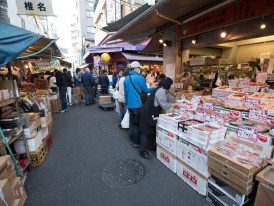
Stalls display seasonal fruits and vegetables as vendors prepare for the morning trade
Curious What You Won’t Find Online?
Discover the side only locals talk about.
Hidden Gems That Locals Love

A serene walkway passes under a wooden gate with autumn maple trees and stone lanterns
Honen-in Temple: Peaceful Beauty Near the Philosopher's Path
Honen-in Temple sits just off the Philosopher’s Path, yet most visitors walk past its understated entrance. This hidden gem offers everything tourists seek in famous temples without the crowds. The temple’s dramatic gate frames a long approach path, creating one of Kyoto’s most photogenic scenes.
My refuge when city life overwhelms me is Anraku-ji Temple, tucked into the hills above the Philosopher’s Path. Most guidebooks skip it entirely. The temple only opens to the public on select days during seasonal flower-viewing periods, like when the camellias bloom spectacularly in late winter.
The elderly monk who tends the garden still burns pine needles in brass bowls, creating incense that drifts through bare maple branches and past wooden houses tucked into the hillside.
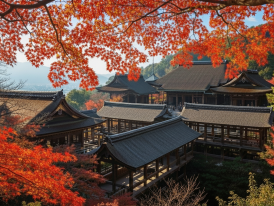
Red maple leaves blanket temple rooftops linked by covered walkways
Eikando Zenrin-ji Temple: The Best Fall Colors in Kyoto
While tourists crowd famous temples for fall colors, locals head to Eikan-dō Zenrin-ji Temple for what many consider the finest autumn display in Kyoto. This Zen temple complex spreads across a hillside, with multiple halls connected by covered walkways winding between towering maple trees.
The temple is nicknamed "Momiji no Eikando" (Maple Eikando) for good reason. Over 3,000 maple trees surround the buildings, creating layers of red, orange, and gold. These covered paths allow you to wander through this colorful canopy at different levels.

Tree-lined avenues lead through Kyoto Gyoen with wide green spaces
Kyoto Gyoen: Forested Paths and Imperial Gardens
Kyoto Gyoen, the park surrounding Kyoto Imperial Palace, offers 250 acres of peaceful forests and gardens in the heart of the city center. Most tourists rush to the Imperial Palace and miss this urban oasis where locals exercise and escape the city’s intensity.
The park features a variety of garden styles, from the formal Imperial Palace grounds to wild forested areas. Spring brings incredible displays, with different blooms appearing from early March through late April. The park is free and open 24 hours a day.

Vermilion buildings stand near flowing river with conical sand formations
Kamigamo Shrine: Ancient Shinto Power by the River
Kamigamo Shrine sits in northern Kyoto, where the Kamogawa River splits into rushing channels that have powered Shinto rituals for over 1,300 years. This UNESCO World Heritage Site predates Kyoto’s founding, making it one of Japan’s oldest famous shrines. The shrine’s cone-shaped sand piles represent sacred mountains, while the flowing river provides purification for worshippers.
Understanding geisha culture requires patience and respect, as these are working artists who maintain centuries-old traditions.
Experience Kyoto Through the Seasons
Time moves differently in Kyoto, marked not by calendar dates but by the gradual unfurling of sakura, summer’s deep green, autumn’s fiery maples, and winter’s hush over ancient courtyards.
Spring: Cherry Blossoms and Temple Gardens
Spring transforms Kyoto, Japan, into one of the world’s most beautiful cities, when sakura paint temples in shades of pink and white. The cherry blossom season typically runs from early April to early May, though timing varies each year.
I still remember my first conscious spring in Kyoto, when I was seven and my grandmother explained why the whole city pauses during this season. “The flowers teach us that beautiful things don’t last forever, which is exactly why we must pay attention.”
Heian Shrine’s gardens offer spectacular displays, with weeping sakura reflected in still ponds. Along the Kamogawa River, locals gather for hanami (flower viewing) parties, spreading tarps under blooming trees to celebrate the season.
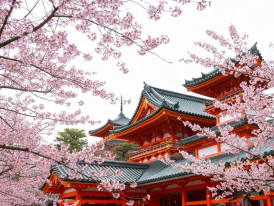
Pink cherry blossoms arch over bright orange shrine structures and open courtyard
Summer: Festivals and Night Illuminations
Summer brings Kyoto’s most spectacular festivals. Gion Matsuri, one of Japan’s three greatest festivals, takes over the city during July with traditional processions and a festive atmosphere that dates back more than 1,000 years.
The festival’s highlight is the parade of massive wooden floats called yamaboko, some reaching four stories tall and weighing over 10 tons. These structures are built without using a single nail, relying instead on traditional Japanese carpentry techniques.
Night illuminations at major temples provide relief from the summer heat. Summer also brings kawadoko dining along the Kamogawa River, where restaurants build platforms over flowing water.

Tall decorated wooden floats pass through busy streets during a lively traditional festival
Autumn: Fiery Maples and Perfect Weather
Autumn might be the perfect time to visit Kyoto, Japan, when temperatures cool and maple trees set the city on fire with brilliant reds, oranges, and golds. Autumn colors typically peak in mid to late November.
Tofuku-ji Temple offers what many consider the finest autumn display in Kyoto. The temple’s Tsuten-kyō Bridge provides elevated views over a valley filled with thousands of maple trees, creating a sea of color that stretches to the horizon.
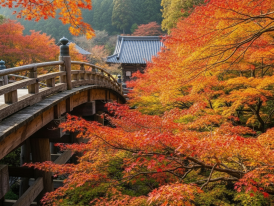
View from above showing vibrant red and golden maple leaves surrounding temple grounds
Winter: Snow-Dusted Temples and Quiet Contemplation
Winter reveals Kyoto’s quiet soul. Tourist crowds thin dramatically, allowing peaceful temple experiences while snow creates magical photo opportunities. Kinkaku-ji becomes even more spectacular when snow covers its roof, creating a contrast that makes the gold leaf glow.
Traditional teahouses become especially welcoming during winter, offering warm matcha tea while you watch snow fall in carefully composed gardens.
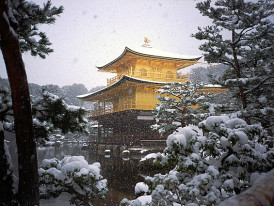
Snow blanketing gardens and pond around a gold-covered pavilion creating a serene winter scene
Beyond the Checklist
Discover the city guidebooks don’t cover with a local by your side.
Cultural Kyoto: Temples, Shrines, and Living Traditions
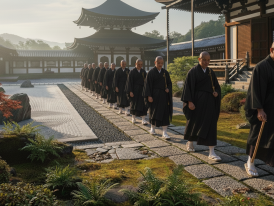
Group of monks crossing a wide stone courtyard surrounded by historic wooden buildings
Understanding Kyoto's Zen Temple Legacy
Kyoto, Japan, houses more Zen temples than any other city in the world. Understanding Zen Buddhism basics enhances every temple visit, transforming tourist attractions into opportunities for cultural learning.
When I walk through Zen temples now, I feel the presence of all those who came before, not as ghosts but as spiritual residue that makes these spaces feel alive with purpose. The rock gardens aren’t just stone arrangements, they’re invitations to see the landscape differently.
Zen temples in Kyoto typically feature rock gardens that represent landscapes in abstract form, meditation halls where monks still practice daily, and art collections that span centuries of Buddhist creativity. The most famous rock garden at Ryoan-ji Temple contains 15 stones arranged so you can never see all of them from any single viewing point, representing the Zen teaching that enlightenment comes from multiple perspectives.

Soft spotlights cast shifting patterns of light and shadow through tall bamboo stalks at night
Kodai Ji Temple: Bamboo Paths and Artistic Design
Kodai-ji Temple demonstrates how Zen Buddhism influenced Japanese aesthetics through careful integration of architecture, gardens, and natural elements. The temple’s bamboo path creates one of Kyoto’s most photographed experiences, where tall bamboo forms natural corridors that filter light into patterns of green and gold.
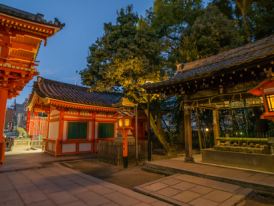
Warm lantern light illuminating stone lanterns and a vivid orange torii gate in the quiet of evening
Yasaka Shrine: Where Shinto and City Life Intersect
Yasaka Shrine sits at the intersection of the Gion district and Maruyama Park, offering one of Kyoto’s most accessible Shinto experiences. This shrine has protected Kyoto from disease and disaster for over 1,350 years. It also features beautiful night illumination throughout the year, with hundreds of lanterns casting atmospheric light.
Make Kyoto Yours with a Local by Your Side
Spend the day exploring Kyoto your way with a local host who shares the city’s stories, traditions, and hidden corners.
Spiritual Kyoto: Zen, Shinto, and Seasonal Rituals
Morning Zazen Sessions: Meditation with Practicing Monks
Participating in morning zazen sessions at active Zen temples offers authentic insight into Buddhist practices. Several temples in Kyoto welcome visitors to join these sessions, providing opportunities for both cultural and spiritual learning.
Shunko-in Temple holds morning meditation sessions in Japanese and English. These hour-long classes include instruction on proper posture, breathing techniques, and meditation principles, followed by sitting practice in the temple’s traditional meditation hall.
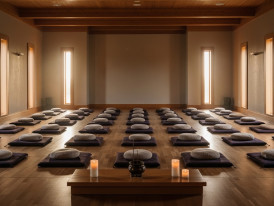
Neatly arranged rows of cushions in a serene hall prepared for early morning meditation
Traditional Tea Ceremony: Understanding Wa-Kei-Sei-Jaku
The Japanese tea ceremony is more than just drinking matcha tea. It embodies philosophical principles that influence all traditional Japanese culture. Wa-kei-sei-jaku (harmony, respect, purity, tranquility) form the foundation of the ceremony, shaping rituals that teach patience and mindfulness.
Tea ceremony experiences usually last 45 minutes to an hour. They begin with purification rituals and seasonal greetings before moving into the careful preparation and serving of powdered green tea, accompanied by traditional Japanese sweets.
For those seeking deeper cultural immersion, our curated Kyoto experiences connect you with local hosts who can guide you through authentic tea ceremonies, temple visits, and seasonal celebrations that go beyond typical tourist offerings.
My favorite place for authentic tea experiences is Ippodo Tea Co. near Teramachi-dori, where my grandmother first taught me to distinguish between different grades of matcha. They’ve been blending tea since 1717, and their staff still hand-whisks matcha the traditional way while explaining the subtle differences between ceremonial and daily-use grades.
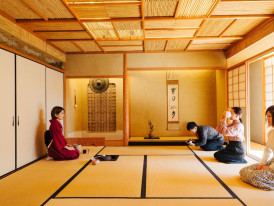
Matcha bowls, whisks, and utensils arranged neatly in a quiet tatami room
Cherry Blossom Rituals: Hanami Culture and Seasonal Celebrations
Spring in Kyoto, Japan, is about more than just viewing flowers. Hanami is one of Japan’s most important cultural traditions, linking seasonal awareness with community celebration and a thoughtful reflection on the fleeting beauty of life.
Traditional hanami parties bring groups together under blooming trees, sharing food, drinks, and music to welcome spring’s arrival. Many Shinto shrines hold special ceremonies in early spring to bless the flowers and pray for the health of the community.
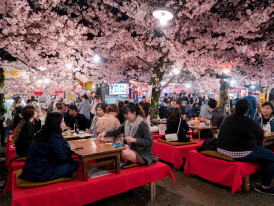
Friends and families sharing food and drinks beneath pink cherry trees in spring
Hungry to Try It Yourself?
Taste and explore the flavors locals actually love.
Kyoto Through Different Interests

Artfully plated multi-course Japanese meal featuring fresh seasonal ingredients on lacquered trays
Culinary Kyoto: What to Eat and Where to Find It
Food in Kyoto, Japan, reflects over 1,000 years of imperial court cuisine, Buddhist temple cooking, and seasonal ingredients. Understanding Kyoto’s culinary traditions enhances every meal, from simple tofu dishes to elaborate kaiseki presentations.
Yudofu, or tofu hotpot, represents Kyoto’s Buddhist culinary heritage. The best yudofu experiences happen in traditional restaurants near temples. Sagano Yudofu in Arashiyama serves exceptional tofu hotpot in a peaceful garden setting near the bamboo grove, with a serene view of temple grounds and carefully landscaped surroundings.
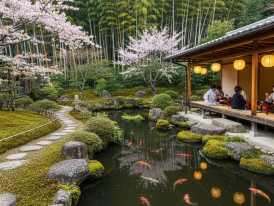
Outdoor seating surrounded by manicured greenery at a traditional Kyoto restaurant near the bamboo grove
When I want comfort food that reminds me of childhood, I head to Ganko Sushi on Pontocho-dori, where the third-generation owner still remembers my father’s favorite order. Their chirashi don features fish from Tsukiji Market, but it’s the small details that make it special, like rice warmed to just the right body temperature and house-made pickles that change with the seasons.
Matcha and traditional Japanese sweets (wagashi) form another essential Kyoto culinary experience.
Historic tea shops like Tsujiri and Kagizen Yoshifusa have perfected these pairings over centuries, offering experiences that connect taste with cultural understanding. These traditional teahouses serve as living museums of Japanese culture, where matcha preparation follows rituals passed down through generations.
Many visitors deepen their culinary knowledge through cooking classes offered by local families, where you can learn to prepare traditional dishes using ingredients from Nishiki Market. These hands-on classes provide insight into daily Japanese life while teaching techniques for creating authentic flavors at home.
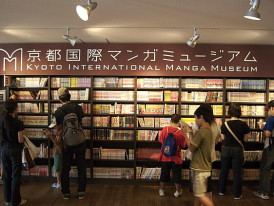
People browsing and reading from extensive manga shelves inside a well-lit contemporary museum space
Art and Culture Beyond Temples
The Kyoto International Manga Museum houses over 300,000 manga volumes in a converted elementary school. This unique museum allows visitors to read manga on-site while learning about the art form’s development from traditional scroll paintings to contemporary graphic novels.
Live drawing demonstrations and workshops let visitors try manga creation techniques while learning about the industry. The museum building itself represents educational architecture from Japan’s modernization period.
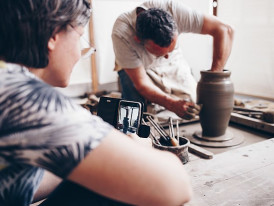
Artisan shaping clay on a spinning wheel while guiding participants in a traditional ceramics studio
Traditional Craft Workshops: Hands-On Cultural Learning
Traditional craft workshops provide another layer of things to do in Kyoto beyond temple visits and cultural performances. Kyoto’s traditional craft heritage includes pottery, textile dyeing, lacquerware, and metalworking techniques refined over centuries. Participating in craft workshops offers direct experience of these artistic traditions while creating personal connections with Japanese aesthetic principles.
Kiyomizu pottery workshops near Kiyomizu-dera Temple teach hand-building and glazing techniques that create distinctive ceramics associated with Kyoto’s artistic heritage. Textile dyeing workshops demonstrate traditional methods for creating kimono colors and patterns.
Let Flexibility Guide You
Crowds at Kyoto’s top sights thin early or late in the day. Plan your visit around these times and fill the rest with places your local host suggests just for you.Photography and Outdoor Experiences
Best Times and Locations for Temple Photography
Photographing Kyoto’s temples requires understanding how light changes throughout the day while respecting religious practices. Early morning light, especially the hour after sunrise, creates dramatic shadows and warm colors that enhance traditional architecture.
Kiyomizu-dera Temple’s wooden stage offers panoramic views over Kyoto that shift beautifully with the seasons. Night photography at illuminated temples requires a tripod but produces magical images impossible to capture during daylight.
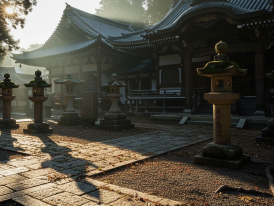
Golden sunrise casting long shadows across stone paving in a quiet temple courtyard
Iwatayama Monkey Park: Wildlife and City Views
Iwatayama Monkey Park sits high above the Arashiyama district, offering encounters with Japanese macaques along with panoramic views over Kyoto. The 20-minute hike provides natural filtering that helps reduce crowds.
Over 120 Japanese macaques live in the park, displaying natural behaviors while remaining accustomed to human presence. The city views from the monkey park reveal Kyoto’s geography in ways impossible to see from ground level.

Japanese macaques perched on hillside with sweeping view of Kyoto skyline in the distance
Kurama to Kibune Hike: Mountain Temples and River Dining
The hike from Kurama to Kibune follows ancient pilgrimage routes through mountain forests, connecting two atmospheric villages. This two-hour walk offers an escape from city crowds while visiting mountain temples.
Kurama-dera Temple sits at the northern starting point, accessible by scenic train from central Kyoto. Kibune village, at the southern end, offers riverside dining experiences that change dramatically with the seasons.
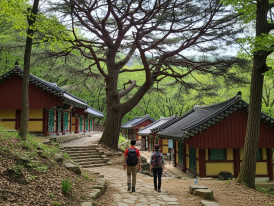
Shaded forest path weaving past wooden temple structures beneath towering old trees
Where to Stay in Kyoto and Why Location Matters

Spacious lobby with minimalist furniture, soft lighting, and Japanese-inspired wood and paper accents
Downtown Kyoto: Convenience and Modern Amenities
Staying downtown near Kyoto Station provides convenient transportation access, shopping, and dining while maintaining reasonable prices. This area offers the best balance of modern amenities and authentic local experiences.
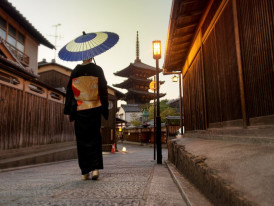
Dimly lit street with wooden facades and soft lantern light casting a warm glow over the historic Gion district
Gion Area: Atmospheric Streets with Tourist Considerations
Staying in the Gion district provides immersive experiences in Kyoto’s most famous geisha district while requiring careful attention to respectful behavior. Traditional ryokan inns offer authentic Japanese hospitality, including tatami rooms, futon bedding, and kaiseki meals.

Tatami room with sliding doors open to a landscaped garden featuring stone paths and manicured greenery
Northern Kyoto: Temple Views and Ryokan Experiences
Northern Kyoto offers the most authentic ryokan experiences combined with access to less crowded temples and natural areas. This area provides immersive cultural experiences while maintaining distance from tourist crowds.
Day Trips from Kyoto That Transform Your Understanding
Beyond the city’s temples and cultural districts, day trip options from Kyoto reveal how the ancient capital connects to broader Japanese culture and history.
These day trip destinations provide context for understanding Kyoto’s role in Japanese civilization while offering experiences impossible within the city limits.
Whether you choose a cultural day trip to Nara or a culinary adventure in Osaka, each excursion adds depth to your Kyoto experience. Planning day trip itineraries allows you to appreciate how Kyoto influenced surrounding regions while discovering attractions that complement the city’s temple-focused offerings.

Lush terraced tea fields stretching across gentle hills with small processing houses among the rows of green
Uji: Tea Plantations and Byodo-in Temple
A day trip to Uji, just 30 minutes south of Kyoto by train, reveals the agricultural foundations supporting Kyoto’s tea culture while visiting one of Japan’s most historically significant temples. Uji produces Japan’s finest matcha tea through cultivation methods unchanged for centuries.
Byodo-in Temple houses the Phoenix Hall, which appears on Japan’s 10-yen coin and represents one of the finest examples of Heian period architecture. The temple’s Pure Land Buddhist design creates earthly representations of paradise.

Grazing deer wandering near historic wooden temple structures in the expansive parkland of Nara
Nara: Japan's First Capital and Sacred Deer
Nara, Japan’s capital before Kyoto, offers day trip experiences demonstrating how Buddhism first established itself in Japan while providing encounters with sacred deer that have lived in the city for over 1,000 years. Most travelers reach Nara via the JR Nara Line, which runs directly from Kyoto Station and takes about 45 minutes.
Nara Park covers 1,240 acres where over 1,000 deer roam freely among visitors, temples, and gardens. These deer are considered messengers of Shinto gods and have legal protection. Todai-ji Temple houses the largest bronze Buddha statue in Japan.

Crowds explore brightly lit streets lined with colorful neon signs in Osaka’s bustling entertainment district
Osaka: From Sacred Kyoto to Japan's Kitchen
A day trip to Osaka provides a dramatic contrast to Kyoto’s temple-focused attractions. Osaka’s reputation as “Japan’s Kitchen” comes from culinary traditions emphasizing hearty, flavorful food and social dining experiences.
Osaka’s street food culture centers around takoyaki (octopus balls), okonomiyaki (savory pancakes), and kushikatsu (fried skewers). The Dotonbori district embodies modern Japanese urban energy through neon signs, busy restaurants, and entertainment venues operating 24 hours.
If you’re extending your journey beyond the Kansai region, consider a day trip to Hiroshima to visit the Atomic Bomb Dome, a UNESCO World Heritage Site that stands as a powerful symbol of peace and resilience.
Curious What You Won’t Find Online?
Discover the side only locals talk about.
Planning Your Kyoto Experience: Practical Wisdom
How Many Days Do You Need in Kyoto?
Three days provide the minimum time to experience Kyoto’s essential temples, districts, and cultural activities. A well-planned visit can cover major temples like the torii gate shrine, Kinkaku-ji, and Kiyomizu-dera while including cultural experiences.
Five to seven days allow you to explore Kyoto more deeply through day trips to nearby areas like Nara, Arashiyama, and northern Kyoto temples, while also providing time for cultural workshops and cooking classes. Two weeks or more enable seasonal experiences, participation in local festivals, and discovery of neighborhoods that rarely appear in guidebooks.
While Kyoto’s trains and buses cover most routes, some travelers opt for a rental car to explore remote temples, countryside towns, or scenic mountain drives at their own pace.
More than 26,282 5-star reviews and counting
26,282+ 5-Star Reviews and Counting
Trusted and recommended by travelers worldwide.

Open calendar marked with handwritten notes for temple visits and neighborhood walks during a week in Kyoto
Getting Around Without Speaking Japanese
Kyoto’s public transportation system includes extensive English signage, announcements, and smartphone apps that make navigation possible without Japanese language skills. Subway and bus systems use color-coding, numbers, and English names that allow navigation through visual recognition.
Learning basic phrases like “arigato gozaimasu” (thank you), “sumimasen” (excuse me), and “eigo ga wakarimasu ka?” (Do you understand English?) demonstrates respect for local culture while encouraging helpful responses.

Directional sign with temple names written in both Japanese characters and English letters
Temple Etiquette and Dress Codes
Visiting temples requires understanding basic etiquette that demonstrates respect for active religious sites. Clothing should cover the shoulders and extend below the knees, with subdued colors preferred. Photography restrictions vary by temple, so always check posted signs before taking photos.
Noise levels should remain low throughout temple grounds, with conversations conducted in quiet voices, and mobile phones set to silent mode.
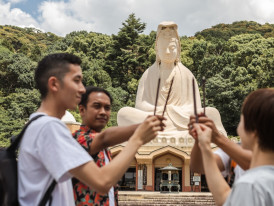
People bow in front of an altar with incense smoke rising and offerings displayed
Before You Go, Talk to Someone Who Knows
A local video call helps you plan the trip that’s right for you.
Frequently Asked Questions: Kyoto Travel Tips and Local Insights
What Is Kyoto Best Known For?
Kyoto, Japan, is best known as the former imperial palace that preserves over 2,000 temples and shrines representing 1,000 years of Japanese cultural development. The city houses 17 UNESCO World Heritage Sites, including famous temples like Kinkaku-ji Temple (Golden Pavilion), Fushimi Inari Shrine with thousands of torii gates, and traditional districts where geisha culture continues. Understanding Kyoto’s history helps visitors appreciate how ancient traditions adapt to modern life while maintaining their essential character.
What to Do in Kyoto in 3 Days?
Three days in Kyoto is enough to experience its most famous temples and cultural highlights. Visit Fushimi Inari Shrine with its thousands of torii gates, marvel at the golden glow of Kinkaku-ji Temple, and take in sweeping views from Kiyomizu-dera Temple. Alongside these iconic sites, enjoy a traditional tea ceremony or savor local dishes like yudofu. This short visit captures Kyoto’s timeless spirit while leaving room to explore its hidden gems on a future trip.
What Non-Touristy Things to Do in Kyoto?
Non-touristy experiences focus on local neighborhoods, smaller temples, and daily activities that residents take part in. Morning walks through residential areas reveal traditional architecture and neighborhood shrines. Participating in morning zazen meditation sessions at active Zen temples offers spiritual experiences alongside practicing monks.
Is Kyoto Worth Visiting in Japan?
Kyoto is absolutely worth visiting because it represents the most complete preservation of traditional Japanese culture anywhere in the world. The city offers experiences that are impossible to find elsewhere, from authentic geisha districts to Zen temples where traditional practices remain unchanged.
When Is the Best Time to Visit Kyoto for Cherry Blossoms?
Cherry blossom season in Kyoto typically lasts from early April to early May, with the peak usually occurring in the second week of April. However, the exact timing varies each year depending on weather patterns. Forecasts begin predicting the bloom in early March, with daily updates as the season approaches.
Can You Visit Temples at Night?
Many temples in Kyoto offer special lighting during specific seasons, creating completely different things to do in Kyoto at night from daytime visits. Yasaka Shrine maintains permanent lantern lighting, creating atmospheric visits year-round. Seasonal temple lighting typically coincides with spring or autumn colors.
Kyoto offers layers of experience that reveal themselves slowly, like the changing seasons or tea ceremony movements that teach patience through repetition. Whether you come for famous temples, cultural workshops, or simply to walk stone paths where history still echoes in temple bells, this ancient capital provides experiences that connect past and present.
Final Thoughts
The best things to do in Kyoto are not just attractions to check off lists. They are opportunities to slow down, pay attention, and learn from a culture that has spent centuries perfecting the arts of living thoughtfully. Take time to sit in temple gardens where monks have meditated for generations, participate in tea ceremonies where every gesture carries meaning, and walk through neighborhoods where traditional architecture creates daily beauty.
Consider exploring unique things to do in Kyoto that connect you with local artisans through cooking classes, craft workshops, or guided visits to Nishiki Market with knowledgeable hosts. The most rewarding experiences often involve slowing down enough to appreciate subtleties, the way morning light changes temple courtyards, how traditional architecture creates daily beauty, or why locals still pause to appreciate seasonal changes that have marked time in this ancient capital for over a millennium.
The temple bells that wake me each morning will continue long after your visit ends, marking time for future visitors who will add their own footsteps to paths we have all shared. Whether you visit for three days or three weeks, the memories you create here will continue to unfold long after you return home, revealing new meanings and a deeper appreciation for the cultural treasures you discovered in Japan’s ancient capital.
Consider booking private tours in Kyoto to discover hidden gems and learn the cultural context that transforms tourist attractions into meaningful encounters with living traditions.
See More of Kyoto on Your Terms
Your Kyoto. Your Pace. Your Perfect Day.
SEE KYOTO EXPERIENCESWhat If Your Next City Day Didn’t Come From a Guidebook?
Instead of following a script, we connect you with someone who lives there and knows the places worth your time.
Wish You Had a Local Friend in Kyoto?
One who knows the city inside out and could plan a private day just for you? Our local hosts do exactly that: no scripts, no tourist traps, just the side of the city most people miss.






